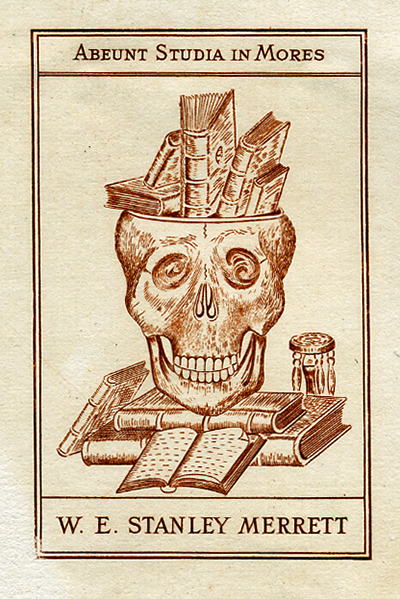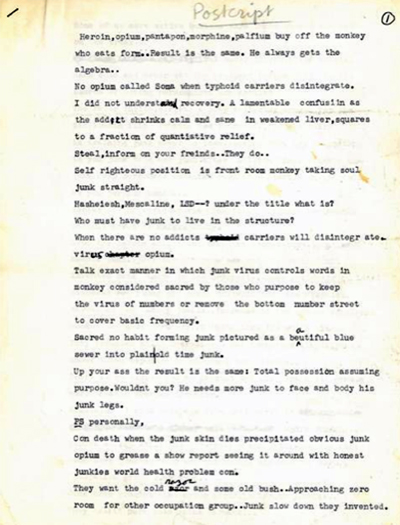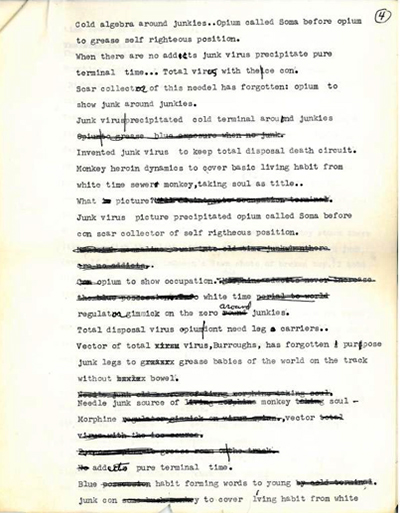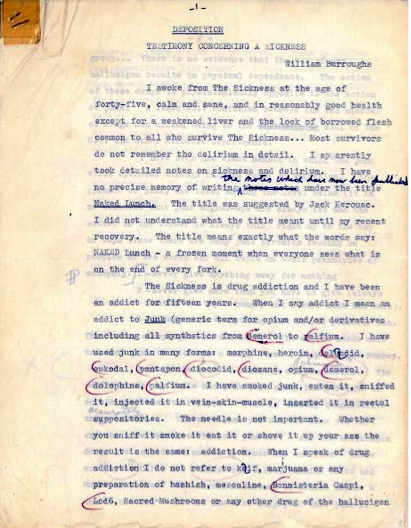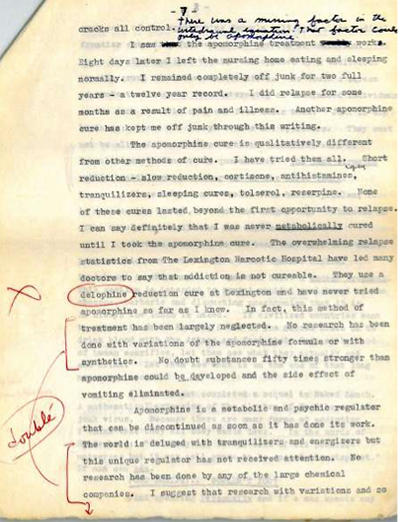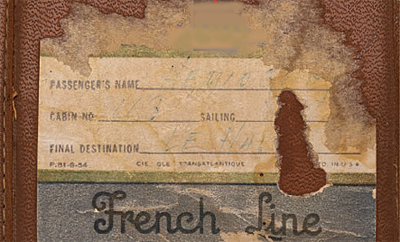by Stephen J. Gertz![]() |
Jim Schock. Life is a Lousy Drag.
Unicorn Publishing, Co., 1959. |
![]() |
The Outsider, no. 1. 1961.
Jon Edgar Webb, ed.
Complete run. |
![]() |
The Insect Trust Gazette, no. 3. 1968.
Robert Basara, Leonard Belasco, Jed Irwin, William Levy, eds.
Collection includes nos. 1, 3. |
![]() |
Merlin, no. 1. Spring 1952.
Alexander Trocchi, ed.
Collection includes vol. 1, nos. 1–3, vol. 2, nos. 1, 3. |
The individual - a reclusive New Jersey inventor - who amassed the collection joyfully suffered from that dreaded of all maladies, libri legendi aegritudinis, the book collector's disease: he "became obsessed with the secretive nature of the world contained in the exhibition's catalog." He used the catalog as a guide and thus put together a singular library, one that he augmented with important ancillary material focusing on the West Coast scene.
![]() |
The Illiterati, no. 4. Summer 1945.
Kermit Sheets and Kemper Nomland, eds. |
![]() |
The Digger Papers. [1968].
24 pp. Published by Paul Krassner. |
The Beat Generation, Counterculture, New York School, Venice West, San Francisco Renaissance, Wichita Vortex, Black Mountain, Mavericks, Hippies, Diggers, and related manifestations of the swirling undercurrent of creativity of the era are all represented in the collection, which includes complete runs and significant examples of Angel Hair, Beatitude, Big Table, Black Mountain Review, C, Caterpillar, Fuck You, Gnaoua, Grist, The Hasty Papers, Insect Trust Gazette, J, Kulchur, Locus Solus, Matter, Measure, Miscellaneous Man, Merlin, Mother, Now, Open Space, The Outsider, Pacific Nation, Poems from the Floating World, Renaissance, San Francisco Earthquake, Set, Some/thing, Tree, Trobar, Whe're/, and Yugen.
![]() |
[Wallace Berman]. Frammis.
Jack Hirschman and Jack Mueller, eds.
Published by Artaud’s Elbow, Berkeley, 1979. |
![]() |
Edward Leedskalnin. A Book in Every Home:
Containing Three Subjects: Ed’s Sweet Sixteen,
Domestic and Political Views.
Self-published, 1936.
Edward Leedskalnin was born January 12, 1887, in Latvia.
At 26 he was engaged to wed a girl 10 years younger whom
he called his "Sweet Sixteen." She broke off the engagement
the night before their wedding and, brokenhearted,
he moved to North America.
Around 1919 he purchased a small piece of land in
Florida City and over the next 28 years constructed
(and lived in) a massive coral monument dedicated
to his "Sweet Sixteen" called "Rock Gate Park."
Working alone at night, Leedskalnin eventually dug
up and sculpted over 1,100 tons of coral into a monument
that would later be known as the Coral Castle.
He would often be asked how he was able to move such
huge boulders and replied:
"I know the secrets of the people who built the pyramids
(being those at the site at Giza in Egypt)."
A Book in Every Home is the longest of Leedskalnin's books
and is a treatise on moral education. He also wrote theories
on magnetism and electricity, including what he called the
“Perpetual Motion Holder.” He went to the grave
refusing to reveal his secret knowledge of the Egyptians. |
The '60s West Coast scene is represented by samples of The San Francisco Oracle, The Southern California Oracle, Communications Company (the publishing arm of the Diggers); items relating to the explosive San Francisco music scene including a collection of handbills and postcards from Family Dog and others; newspapers and magazines of radical politics such as The Berkeley Barb, Ramparts, The Realist; uncommon pre-zine self-published journals of offbeat commentary such as Horseshit and Jack Green's Newspaper; and a wide assortment of pamphlets, magazines and diverse additional obscure and rarely seen publications from the period.
![]() |
Gnaoua, no. 1. Spring 1964.
Ira Cohen, ed.
Sole issue, no. 1] |
![]() |
Measure, no. 2. Winter 1958.
John Wieners, ed.
Collection includes nos. 1–2. |
The writers, artists, and photographers who contributed to these magazines include a who's who of American (and, to a lesser degree, European) arts and letters in the second half of the twentieth century, the wrecking crew whose adventures and experiments upset the status quo and built the foundation for a new American post-War culture, a once alternative fraternity now in the mainstream of Postmodern America with a degree of acceptance that they could never have imagined, once outside, now venerated, 21st century insiders:
![]() |
Now Now. 1965.
Charles Plymell, ed.
Collection includes nos. 1–2. |
Robert Duncan, Kenneth Patchen, Denise Levertov, Alex Comfort, William Everson, William Burford, Alexander Trocchi, Christopher Logue, Patrick Brangwyn, Alfred Chester, H. Charles Hatcher, James Fidler, Patrick Bowles, Richard Seaver, A.J. Ayer, Jean-Paul Sartre, Jean Genet, Henry Miller, Robert Creeley, Jack Kerouac, Edward Dahlberg, William S. Burroughs, Gilbert Sorrentino, Lenore Kandel, ruth weiss, Philip Lamantia, Gregory Corso Richard Brautigan, Joe Brainard, Ted Berrigan, Andy Warhol, Gerald Malanga, Frank O'Hara, John Thomas, Charles Bukowski, Neal Cassady, George Bataille, Ed Ruscha, Antonin Artaud, Brion Gysin, Sinclair Beiles, Michael McClure, Bruce Connor, Michael McClure, Allen Ginsberg, Bruce Connor, Wallace Berman, Dennis Hopper, Robert Bly, Gary Snyder, V.R. (Bunny) Lang, Leroi Jones, Alfred Jarry, Peter Berg, Emmett Grogan, and Paul Krassner.
___________
All images courtesy of
Granary Books, currently offering this collection, with our thanks. Inquiries can be made
here.
___________
___________








